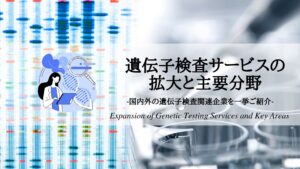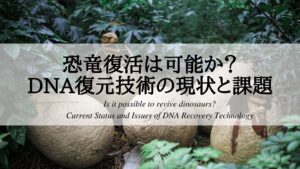DNA, deoxyribonucleic acid, stands as the fundamental molecule of life, a microscopic blueprint that carries the genetic instructions for the development, functioning, growth, and reproduction of all known organisms and many viruses. The discovery and subsequent exploration of DNA have profoundly transformed various fields, including medicine, agriculture, and forensics, leading to unprecedented advancements in our understanding of the living world. This article aims to chart the historical course of DNA discovery, highlighting the pivotal experiments and scientists who contributed to this monumental scientific achievement. Furthermore, it will delve into the exciting and often perplexing frontiers of contemporary DNA research, focusing on the areas that remain poorly understood and continue to drive scientific inquiry, with a particular emphasis on both international and Japanese contributions to this ongoing endeavor.
Part 1: Unraveling the Double Helix – A Journey Through the History of DNA Discovery
The Early Seeds: From Mendel’s Peas to Miescher’s Nuclein
The story of DNA begins long before its chemical identification. In 1857, Gregor Mendel, an Augustinian monk, embarked on a meticulous series of experiments with pea plants.1 By carefully selecting specific characteristics and performing reciprocal crosses over multiple generations, Mendel was able to identify consistent ratios of inherited traits.1 His work laid the foundation for understanding that traits are passed down from parents to offspring through discrete, heritable factors, which we now know as genes.2 Although Mendel’s experiments marked the advent of modern genetics, the physical nature of these heritable factors remained a mystery at the time.1 His observations, however, established the fundamental principles of inheritance, suggesting that certain units of heredity dictate specific characteristics.1 This early work, while crucial, did not yet identify the molecular basis of inheritance, highlighting the incremental nature of scientific understanding.
The first physical step towards identifying DNA came in 1869 with Swiss physician Friedrich Miescher.1 Miescher, aiming to study the chemistry of cells, devised a protocol to isolate a substance he called ‘nuclein’ from the nuclei of white blood cells obtained from discarded surgical bandages.7 He later isolated a purer sample of this same material from salmon sperm.1 Miescher’s meticulous work involved digesting lymphocytes with proteases, extracting the material with ether and alcohol, and precipitating it with acid.5 He recognized this substance as novel due to its high concentration of phosphorus, a characteristic that distinguished it from proteins, which were the primary focus of biological research at the time.5 Despite his groundbreaking discovery, Miescher’s findings were initially met with skepticism, and the publication of his paper was delayed for two years until 1871 as his mentor insisted on independent verification.5 This delay and the initial lack of understanding of its significance contributed to his role in the history of genetics being largely overlooked for some time.5 In 1889, Richard Altmann, Miescher’s pupil, further refined the understanding of nuclein by renaming it ‘nucleic acid’ and observing that it existed only in the chromosomes.1 This localization of nucleic acid to chromosomes, which were already implicated in heredity through the work of scientists like Walter Flemming who described their behavior in 1882, was a vital connection between Miescher’s chemical discovery and the field of genetics.1
Identifying the Genetic Material: The Groundbreaking Experiments of Griffith, Avery-MacLeod-McCarty, and Hershey-Chase
The next crucial step in the DNA story involved understanding its function as the carrier of genetic information. In 1928, British bacteriologist Frederick Griffith conducted a series of experiments with two strains of Streptococcus pneumoniae: a virulent ‘smooth’ (S) strain and a non-virulent ‘rough’ (R) strain.1 Griffith observed that while mice injected with the live S strain died, those injected with the live R strain or heat-killed S strain survived.2 However, when he injected mice with a mixture of heat-killed S strain and live R strain, the mice surprisingly died, and living S strain bacteria were recovered from their blood.2 This phenomenon, which Griffith termed ‘transformation,’ indicated that some substance from the heat-killed S strain could transfer the trait of virulence to the live R strain.3 Griffith’s experiment provided the first evidence that genetic material could be transferred between organisms, although the identity of this “transforming principle” remained unknown.13
In 1944, Oswald Avery, Colin MacLeod, and Maclyn McCarty at The Rockefeller Institute took Griffith’s work further in a landmark experiment.2 They sought to identify the chemical nature of the substance responsible for transformation.14 Their approach involved isolating various components from the heat-killed S strain bacteria, including proteins, RNA, and DNA, and then testing each component’s ability to transform the R strain.2 Through a meticulous process of purification and enzymatic degradation of each component, they demonstrated that only DNA was capable of causing the transformation.2 This groundbreaking finding provided the first direct evidence that DNA, not protein as was widely believed at the time due to its apparent structural simplicity, carried genetic information.14 Despite the clarity of their results, the idea that DNA was the primary genetic material was initially met with skepticism from some in the scientific community.14
Further compelling evidence for DNA as the genetic material came in 1952 from the work of Alfred Hershey and Martha Chase.2 They conducted experiments using bacteriophages, viruses that infect bacteria, which are composed of a protein coat and a DNA core.2 Hershey and Chase designed an elegant experiment to determine whether it was the phage’s protein or DNA that entered the bacteria during infection and directed the production of new phage particles.2 They used radioactive isotopes to label either the protein (with sulfur-35) or the DNA (with phosphorus-32) of the phages.2 After allowing the labeled phages to infect bacteria, they separated the phages from the bacteria and found that the radioactive phosphorus, and thus the DNA, had entered the bacterial cells, while most of the radioactive sulfur remained outside.2 This conclusively demonstrated that DNA, not protein, was the genetic material injected by the phage and responsible for directing the synthesis of new viruses.15 This experiment, using a different biological system, strongly corroborated the findings of Avery and his colleagues, solidifying the scientific consensus that DNA was indeed the molecule of heredity.
Cracking the Code: The Race to Discover DNA’s Structure – Watson, Crick, Franklin, and Wilkins
With the understanding that DNA was the genetic material firmly established, the next grand challenge was to decipher its structure. In the 1920s, Phoebus Levene at the Rockefeller Institute identified the basic components of a DNA molecule: four nitrogenous bases (adenine, guanine, cytosine, and thymine), a sugar (deoxyribose), and a phosphate group.1 He also showed that these components were linked in the order of phosphate-sugar-base.1 Later, in the 1940s, Erwin Chargaff discovered that the base composition of DNA varied between species and that the amount of adenine was always equal to the amount of thymine, and the amount of guanine was always equal to the amount of cytosine (Chargaff’s rules).1 These chemical insights into DNA’s composition provided crucial clues for determining its three-dimensional structure.
The pivotal breakthrough in understanding DNA’s structure came from the work of Rosalind Franklin and Maurice Wilkins using X-ray diffraction.1 Franklin, an expert in X-ray crystallography, joined John Randall’s laboratory at King’s College London in 1951 to study DNA.33 Through meticulous experimentation, she was able to obtain high-resolution X-ray diffraction images of DNA fibers.1 Her famous “Photograph 51,” captured in May 1952, provided critical evidence that DNA had a helical structure.29 The X-shaped pattern in the diffraction image strongly suggested a double-stranded helix, and Franklin’s analysis of the image allowed for precise calculations of the molecular spacing within the DNA molecule.1 Her work also indicated that the phosphate groups were likely located on the outside of the helix.34 Franklin’s experimental data were instrumental in revealing the physical shape of the DNA molecule.
In 1953, James Watson and Francis Crick at the Cavendish Laboratory in Cambridge, building upon Franklin’s X-ray data and Chargaff’s rules, proposed the now-iconic double helix model of DNA.1 Watson and Crick’s model described DNA as two long, helical strands wound around each other, resembling a twisted ladder.28 The sugar-phosphate backbones formed the ‘uprights’ of the ladder on the outside, while the nitrogenous bases were located on the inside, forming ‘rungs’ by pairing through hydrogen bonds.28 Crucially, their model showed that adenine (A) always paired with thymine (T), and guanine (G) always paired with cytosine (C), consistent with Chargaff’s rules.28 This specific base pairing not only explained the stability of the double helix but also immediately suggested a mechanism for DNA replication: if the two strands separated, each could serve as a template for the synthesis of a new complementary strand.29 The double helix structure elegantly explained how DNA could both carry vast amounts of genetic information in the sequence of its bases and be accurately copied during cell division, revolutionizing the field of biology. The work of Franklin and Wilkins, published alongside Watson and Crick’s paper in Nature, provided the crucial experimental support for their model.32
The Dawn of the Sequencing Era: Key Milestones in Reading the Book of Life
The discovery of DNA’s structure paved the way for understanding how genetic information is encoded and transmitted. The next major leap came with the development of techniques to read the sequence of DNA bases. In 1977, Frederick Sanger, Allan Maxam, and Walter Gilbert independently developed methods for DNA sequencing.1 These methods allowed scientists to determine the exact order of nucleotides in a DNA molecule, opening up the possibility of studying genes and genomes in unprecedented detail. A few years later, in 1983, Kary Mullis invented the Polymerase Chain Reaction (PCR), a revolutionary technique that allows for the amplification of specific DNA sequences.1 PCR made it possible to generate millions of copies of a small amount of DNA, making it easier to study and manipulate. These technological advancements, DNA sequencing and PCR, provided the essential tools for the modern era of genomics, enabling researchers to explore the function of genes, understand genetic variation, and develop new diagnostic and therapeutic strategies.
Part 2: The Unexplored Territories – Current Frontiers and Unsolved Mysteries in DNA Research
Delving into the Darkness: Unraveling the Functions of Non-coding (“Dark”) DNA
While the protein-coding genes, which provide instructions for making proteins, constitute only about 2% of the human genome, the remaining 98% is known as non-coding DNA.40 Initially, a significant portion of this non-coding DNA was considered to be “junk DNA,” lacking any apparent function.41 However, the sheer size of the non-coding portion of the genome hinted that it might play important roles beyond simply being evolutionary leftovers.42 Indeed, extensive research over the past few decades has revealed that non-coding DNA is far from being junk and plays crucial regulatory and structural roles within the genome.41
One of the primary functions of non-coding DNA is the regulation of gene expression.41 Within these regions lie various regulatory elements, such as promoters, enhancers, silencers, and insulators, which control when, where, and how much proteins are produced.41 These elements act as binding sites for specialized proteins called transcription factors, which can either activate or repress the transcription of nearby genes.44 Furthermore, non-coding DNA provides the instructions for the formation of various types of RNA molecules that do not code for proteins, known as non-coding RNAs (ncRNAs).41 These include transfer RNAs (tRNAs) and ribosomal RNAs (rRNAs), which are essential for protein synthesis, as well as microRNAs (miRNAs) and long non-coding RNAs (lncRNAs), which play diverse roles in regulating gene expression and other cellular processes.41 Non-coding DNA also has vital structural roles, forming telomeres at the ends of chromosomes, which protect them from degradation, and centromeres, which are crucial for chromosome segregation during cell division.41 The organization of DNA into tightly packed heterochromatin and more loosely packed euchromatin, both of which involve non-coding DNA sequences, also plays a significant role in controlling gene activity and maintaining chromosome structure.41
Given the vastness and complexity of non-coding DNA, researchers have launched initiatives like the “dark matter project” to specifically investigate the functions of these largely unexplored genomic regions.40 These projects employ advanced DNA synthesis and genome editing technologies to design and introduce defined variations into non-coding sequences, allowing scientists to study their effects on cellular phenotypes.40 Recent findings have even suggested that thousands of previously unidentified genes might reside within these non-coding regions, potentially encoding small proteins called miniproteins.50 Some of these miniproteins appear to be involved in the immune system, hinting at new avenues for developing vaccines and immunotherapies.50 Moreover, variations in non-coding DNA have been increasingly linked to the susceptibility and development of various diseases, including neurodegenerative diseases, heart disease, and cancer.40 Genome-wide association studies (GWAS) have identified numerous disease-associated variants in non-coding regions, suggesting that these variations might affect gene regulation and contribute to disease pathogenesis.40 Thus, the study of non-coding DNA is a rapidly evolving field that continues to reveal the hidden complexities and functional importance of the majority of our genome.
Epigenetics: How Environment Shapes Our Genes – Latest Findings and Lingering Questions
Epigenetics is another fascinating frontier in DNA research, focusing on heritable changes in gene function that occur without any alterations to the underlying DNA sequence.51 These epigenetic modifications, which include DNA methylation, histone modifications, chromatin remodeling, and RNA modifications, act as a layer of control over gene expression, influencing whether a gene is turned “on” or “off”.53 Epigenetics provides a crucial mechanism for how the environment can interact with our genes to shape our traits and health.52
Numerous environmental factors have been shown to influence gene expression through epigenetic modifications.52 For instance, diet, stress, exposure to toxins, and even second-hand smoke can alter DNA methylation patterns and histone modifications, leading to changes in gene activity.52 Studies on events like the Dutch Hunger Winter during World War II have demonstrated that malnutrition during pregnancy can cause long-lasting epigenetic changes in the offspring, affecting their health decades later.53 This highlights the potential for environmental exposures during critical developmental periods to have profound and enduring epigenetic effects. Furthermore, there is growing evidence for transgenerational epigenetic inheritance, suggesting that some epigenetic modifications acquired in response to environmental factors can be passed down from one generation to the next.52
Recent advancements in technology have led to the development of powerful epigenetic editing tools.51 These systems allow scientists to precisely program chromatin modifications at any specific position in the genome, opening up new possibilities for understanding the functional roles of epigenetic marks and for developing targeted therapies for various diseases, including cancer and neurological disorders.51 By directly manipulating epigenetic modifications, researchers hope to reverse disease-associated gene expression patterns and restore normal cellular function. Despite these exciting advances, many questions in epigenetics remain unresolved.55 The exact mechanisms by which epigenetic marks are transmitted across generations, the stability of these marks over long periods, and the extent to which epigenetic changes contribute to long-term evolution are still subjects of intense scientific investigation and debate.55 Understanding the intricate language of epigenetic modifications and their dynamic interplay with the genome remains a major challenge and a key focus of future research.
The Complex Dance: DNA’s Role in Diseases Where the Genetic Basis is Not Fully Understood
While single-gene disorders, caused by mutations in a single gene, have a clear genetic basis, many common diseases, such as cancer, heart disease, diabetes, and mental illness, are considered complex diseases.66 These diseases arise from a complex interplay of multiple genetic and environmental factors, many of which are not yet fully understood.67 Unlike Mendelian disorders with clear inheritance patterns, complex diseases often show familial clustering but do not follow simple segregation patterns.66 Identifying all the contributing genetic variants and deciphering how they interact with each other and with environmental factors to increase disease risk remains a significant challenge.66
Genome-wide association studies (GWAS) have been instrumental in identifying numerous genetic variants associated with complex diseases.40 These studies compare the genomes of large groups of people with and without a particular disease to pinpoint genetic variations that are more common in the affected individuals. However, most of the identified variants have only a small effect on disease risk, and many are located in non-coding regions of the genome, making it difficult to understand their functional consequences.69 Translating these genetic associations into a comprehensive understanding of the underlying disease mechanisms is a major goal of ongoing research.
In addition to single nucleotide polymorphisms (SNPs), large-scale changes in DNA structure, known as structural variants, are increasingly recognized as playing a significant role in complex diseases.69 These variants, which include deletions, insertions, duplications, and rearrangements of large DNA segments, are often poorly detected by traditional sequencing methods but can have substantial impacts on gene function.69 The development of long-read DNA sequencing technologies is allowing researchers to better identify and characterize these complex genomic alterations and understand their contribution to disease susceptibility.73 Furthermore, research has revealed an intriguing connection between Mendelian and complex diseases.75 Genes that harbor causal mutations for rare Mendelian disorders can also contain variants that contribute to the risk of more common complex diseases.75 Studying the genetic basis of these rare, high-impact disorders can provide valuable insights into the biological pathways involved in more prevalent and genetically complex conditions. The intricate dance between our genes and the environment in the development of complex diseases continues to be a major area of focus in DNA research, with the ultimate aim of developing more effective strategies for prevention, diagnosis, and treatment.
Tracing Our Origins: The Current Understanding of DNA’s Emergence and Early Evolution
Understanding the origins of DNA and the early evolution of genetic material is a fundamental question in biology. The prevailing scientific hypothesis suggests that DNA originated from RNA in an early period of life on Earth known as the “RNA world”.76 RNA, ribonucleic acid, is a molecule similar to DNA that plays several crucial roles in modern cells, particularly in protein synthesis.78 The RNA world hypothesis proposes that in early life, RNA served as both the carrier of genetic information and the primary catalytic molecule, performing functions now carried out by DNA and proteins.78 Evidence supporting this hypothesis includes RNA’s ability to store genetic information and catalyze chemical reactions, as well as the fact that RNA is still involved in several fundamental processes in modern cells.78 It is believed that DNA evolved later from RNA, likely due to its greater chemical stability, which makes it a more reliable molecule for long-term storage of genetic information.76
The transition from an RNA-based world to a DNA-based world required the evolution of key enzymatic activities, including enzymes for the synthesis of DNA precursors, reverse transcriptases to copy RNA into DNA, and DNA polymerases to replicate DNA molecules.77 While the RNA world hypothesis is widely accepted, the exact mechanisms and timeline of DNA’s emergence are still under investigation.79 Some alternative theories suggest that RNA and DNA might have formed around the same time under the conditions present on early Earth.79 Research continues to explore the various possibilities for the origin of genetic material and the sequence of events that led to the DNA-based life we know today.
The early evolution of genetic material also involved the emergence of the first biological species.80 It is thought that early life forms likely engaged in extensive horizontal gene transfer, a process where genetic material is exchanged between unrelated organisms.82 This would have resulted in a more fluid and less defined genetic landscape compared to modern life, where inheritance is primarily vertical, from parent to offspring.82 Over time, as certain combinations of genetic material proved more advantageous, they would have been preferentially passed on through vertical inheritance, eventually leading to the formation of the first distinct species and the onset of Darwinian evolution.82 Tracing the origins and early evolution of DNA provides crucial insights into the fundamental processes that gave rise to all life on our planet.
Part 3: A Global Perspective – Contributions from Japanese DNA Research
Japanese scientists have made significant contributions to the field of DNA research, particularly in the era of genomics and beyond. Japan played a crucial role in the international Human Genome Project (HGP), a landmark effort to determine the complete sequence of the human genome.83 In the early 1980s, Akiyoshi Wada pioneered the first project aimed at automating DNA sequencing technology, a critical step for the HGP.83 Ken-ichi Matsubara exhibited exceptional leadership in launching the comprehensive human genome program in Japan, ensuring the nation’s active participation in this global endeavor.84 Hideki Kambara made a major contribution by developing a key device for high-speed multi-capillary DNA sequencers, which significantly enhanced the ability to construct the human genome draft sequences.84 The RIKEN team, led by Yoshiyuki Sakaki, played remarkable roles in the draft sequencing and completion of chromosomes 21, 18, and 11, while the Keio University team, led by Nobuyoshi Shimizu, made noteworthy contributions to the completion of chromosomes 22, 21, and 8.84 In April 2003, the Japanese team proudly joined the international consortium in declaring the completion of the human genome sequence.84 These efforts highlight Japan’s early and substantial commitment to advancing genomic research and technology.
Japan continues to be heavily involved in human and medical genetics research.85 The country has established several important genomic databases, including the Kyoto Encyclopedia of Genes and Genomes (KEGG), the world’s first database to integrate genomic, chemical, and systematic functional data, and BioBank Japan (BBJ), one of the world’s largest disease biobanks containing DNA, serum, and clinical information from over 270,000 Japanese patients.85 These resources are invaluable for understanding the genetic basis of diseases and for advancing personalized medicine. Initiatives like the Initiative on Rare and Undiagnosed Diseases (IRUD) and the Medical Genomics Japan Variant Database (MGeND) promote the use of whole-genome or whole-exome sequencing to diagnose individuals with rare diseases and integrate clinical and genomic data to facilitate the implementation of genomic medicine.85 Japanese researchers have also made significant contributions to functional genomics, structural biology, and bioinformatics.85
Furthermore, ancient DNA analysis is providing new insights into the genetic origins of the Japanese people.87 Recent studies using whole-genome sequencing of ancient skeletal remains have revealed a more complex ancestry than previously thought, indicating contributions from not only the Jomon and rice-farming migrants from East Asia (Yayoi) but also a third group known as the Emishi, who had connections to northeast Asia.87 These findings are reshaping our understanding of the demographic history and genetic diversity of the Japanese population, highlighting the power of DNA analysis to uncover the intricacies of human migration and population formation.
Part 4: Looking Ahead – Challenges and Future Directions in DNA Research
Despite the remarkable progress in DNA research, several challenges remain.95 Obtaining high-quality DNA samples in sufficient quantities and with diverse representation remains a hurdle for many research projects.98 The sheer volume of genomic data generated by advanced sequencing technologies presents significant challenges in terms of storage, management, analysis, and interpretation, requiring sophisticated computational infrastructure and expertise.98 While gene editing technologies like CRISPR-Cas9 hold immense promise, issues such as off-target editing and the need for improved delivery methods still need to be addressed.97 The ethical and legal implications of increasingly powerful DNA technologies, particularly in areas like forensic science, genetic privacy, and the use of genetic information, require careful consideration and the development of appropriate guidelines and regulations.100 In the realm of gene therapy, ensuring safety, reducing high treatment costs, and improving accessibility remain significant challenges.96
The future of DNA research is brimming with exciting possibilities.86 Advancements in next-generation sequencing (NGS) continue to drive down costs and increase speed and accuracy, making comprehensive genomic analysis more accessible.86 Long-read sequencing technologies are enabling the resolution of previously inaccessible genomic regions and the detection of complex structural variations with greater precision.73 Artificial intelligence (AI) and machine learning (ML) are playing an increasingly vital role in analyzing the vast amounts of genomic data, identifying patterns, and generating new insights.95 The promise of personalized medicine, tailoring healthcare decisions to an individual’s genetic makeup, is becoming closer to reality with the increasing availability of genomic information for disease prediction, prevention, and treatment.86 Gene therapy and gene editing technologies are rapidly advancing, offering potential cures for a wide range of genetic diseases.86 In forensic science, rapid DNA testing, forensic genetic genealogy, and the analysis of microbial DNA hold the potential to revolutionize criminal investigations and identify missing persons.116 Furthermore, future research will undoubtedly continue to focus on unraveling the functional roles of non-coding DNA and understanding the intricate mechanisms of epigenetics in health and disease.40 The convergence of these technological advancements and research directions promises to unlock even deeper secrets of the molecule of life and lead to transformative benefits for human health and beyond.
Conclusion: Reflecting on the Past, Present, and Future of DNA Research
The journey of DNA discovery has been a remarkable testament to human curiosity and the power of scientific inquiry. From Mendel’s foundational work on inheritance to Miescher’s isolation of nuclein, the identification of DNA as the genetic material through the experiments of Griffith, Avery-MacLeod-McCarty, and Hershey-Chase, and the elucidation of its elegant double helix structure by Watson and Crick with crucial contributions from Franklin and Wilkins, each step has built upon the last, leading to our current sophisticated understanding of this fundamental molecule.
Today, DNA research stands at an exciting frontier, with many mysteries still to be unraveled. The functions of the vast non-coding regions of our genome, the intricate interplay between our genes and the environment through epigenetics, the complex genetic basis of many common diseases, and the precise origins of DNA itself continue to drive intense scientific investigation. This global endeavor has seen significant contributions from researchers around the world, including the pivotal role played by Japanese scientists in the Human Genome Project and their ongoing leadership in genomics research and ancient DNA studies.
Looking ahead, the future of DNA research holds immense potential. Technological advancements in sequencing, gene editing, and computational analysis are poised to unlock new insights into the complexity of life and pave the way for transformative applications in medicine, agriculture, and beyond. As we continue to explore the molecule of life, we can anticipate even more profound discoveries that will undoubtedly shape the future of science and benefit humanity in countless ways.
Key Discoveries in DNA Research
| Year | Scientist(s) | Key Discovery/Experiment | Significance |
| 1857-1863 | Gregor Mendel | Experiments on pea plants | Established the basic principles of inheritance through “heritable factors” (genes). |
| 1869 | Friedrich Miescher | Discovery of ‘nuclein’ in cell nuclei | Identified DNA as a distinct molecule with a unique chemical composition. |
| 1889 | Richard Altmann | Renamed nuclein to ‘nucleic acid’ and localized it to chromosomes | Connected Miescher’s chemical discovery to the physical carriers of heredity. |
| 1928 | Frederick Griffith | Bacterial transformation experiment | Showed that genetic material could be transferred between organisms. |
| 1944 | Avery, MacLeod, McCarty | Identification of DNA as the transforming principle | Provided the first direct evidence that DNA carries genetic information. |
| 1952 | Hershey and Chase | Bacteriophage experiment | Further confirmed that DNA, not protein, is the genetic material. |
| 1953 | James Watson and Francis Crick (with contributions from Rosalind Franklin and Maurice Wilkins) | Proposed the double helix model of DNA structure | Revealed the three-dimensional structure of DNA and provided a basis for understanding its function in replication and information storage. |
| 1977 | Frederick Sanger, Allan Maxam, Walter Gilbert | Development of DNA sequencing methods | Enabled the reading of the nucleotide sequence of DNA. |
| 1983 | Kary Mullis | Invention of Polymerase Chain Reaction (PCR) | Allowed for the amplification of specific DNA sequences. |
Current Frontiers and Unsolved Questions in DNA Research
| Research Area | Key Focus/Description | Unsolved Questions/Challenges |
| Non-coding DNA | Regions of the genome that do not code for proteins; involved in gene regulation, structural roles, and potentially encoding small proteins. | What are the functions of the vast majority of non-coding DNA? How do specific non-coding sequences regulate gene expression? Are there more undiscovered genes within these regions? How do variations in non-coding DNA contribute to disease? |
| Epigenetics | Heritable changes in gene function without alterations to the DNA sequence; influenced by environmental factors. | How are epigenetic marks transmitted across generations? What is the long-term stability and evolutionary significance of epigenetic changes? How can epigenetic editing be used therapeutically? |
| Complex Diseases | Diseases arising from a combination of genetic and environmental factors, with no clear Mendelian inheritance patterns. | What are all the genetic variants that contribute to the risk of complex diseases? How do these variants interact with each other and with environmental factors? What is the role of structural variants in complex diseases? |
| Origins of DNA | The study of how DNA emerged and evolved in early life. | What were the exact mechanisms and timeline of the transition from an RNA world to a DNA world? Are there alternative theories for the origin of DNA? How did early genetic material evolve and lead to the first biological species? |
引用文献
- History of DNA Research: Scientific Pioneers & Their Discoveries – News-Medical, 4月 7, 2025にアクセス、 https://www.news-medical.net/life-sciences/History-of-DNA-Research-Scientific-Pioneers-Their-Discoveries.aspx
- Classic experiments: DNA as the genetic material (article) – Khan Academy, 4月 7, 2025にアクセス、 https://www.khanacademy.org/science/biology/dna-as-the-genetic-material/dna-discovery-and-structure/a/classic-experiments-dna-as-the-genetic-material
- 高等学校生物/生物I/遺伝情報とDNA – Wikibooks, 4月 7, 2025にアクセス、 https://ja.wikibooks.org/wiki/%E9%AB%98%E7%AD%89%E5%AD%A6%E6%A0%A1%E7%94%9F%E7%89%A9/%E7%94%9F%E7%89%A9I/%E9%81%BA%E4%BC%9D%E6%83%85%E5%A0%B1%E3%81%A8DNA
- www.news-medical.net, 4月 7, 2025にアクセス、 https://www.news-medical.net/life-sciences/History-of-DNA-Research-Scientific-Pioneers-Their-Discoveries.aspx#:~:text=Swiss%20physician%20Friedrich%20Miescher%20discovered,for%20his%20paper%20in%201871.
- Before Watson and Crick in 1953 Came Friedrich Miescher in 1869 – PMC, 4月 7, 2025にアクセス、 https://pmc.ncbi.nlm.nih.gov/articles/PMC7268995/
- 走馬灯の逆廻しエッセイ> 第15話 「DNAの発見」 Friedirich Miesher – 日本RNA学会, 4月 7, 2025にアクセス、 https://www.rnaj.org/?view=article&layout=blog&id=720:furuichi-15&catid=118:vol-39
- www.genome.gov, 4月 7, 2025にアクセス、 https://www.genome.gov/25520232/online-education-kit-1869-dna-first-isolated#:~:text=DNA%20First%20Isolated-,1869%3A%20DNA%20First%20Isolated,a%20hospital%20near%20his%20university.
- Friedrich Miescher :: DNA from the Beginning – DNAFTB.org, 4月 7, 2025にアクセス、 https://www.dnaftb.org/15/bio.html
- 1869: DNA First Isolated – National Human Genome Research Institute, 4月 7, 2025にアクセス、 https://www.genome.gov/25520232/online-education-kit-1869-dna-first-isolated
- From discovering to understanding: Friedrich Miescher’s attempts to uncover the function of DNA – EMBO Press, 4月 7, 2025にアクセス、 https://www.embopress.org/doi/10.1038/embor.2010.14
- Discovering DNA: Friedrich Miescher and the early years of nucleic acid research – PubMed, 4月 7, 2025にアクセス、 https://pubmed.ncbi.nlm.nih.gov/17901982/
- Friedrich Miescher: The Pioneer of Nucleic Acid Discovery – Oxford Global, 4月 7, 2025にアクセス、 https://oxfordglobal.com/nextgen-biomed/resources/friedrich-miescher-the-pioneer-of-nucleic-acid-discovery
- DNAって何だろう?: グリフィスの実験 – Cute.Guides, 4月 7, 2025にアクセス、 https://guides.lib.kyushu-u.ac.jp/c.php?g=774862&p=5558842
- Oswald Avery | DNA Transformation Pioneer, American Bacteriologist – Britannica, 4月 7, 2025にアクセス、 https://www.britannica.com/biography/Oswald-Avery
- The Griffith and Hershey-Chase Experiments – MCAT Biology | MedSchoolCoach, 4月 7, 2025にアクセス、 https://www.medschoolcoach.com/the-griffith-and-hershey-chase-experiments-mcat-biology/
- Oswald Avery: DNA as the transforming principle :: DNA from the Beginning – DNAFTB.org, 4月 7, 2025にアクセス、 https://www.dnaftb.org/17/animation.html
- From the discovery of DNA to current tools for DNA editing – PMC, 4月 7, 2025にアクセス、 https://pmc.ncbi.nlm.nih.gov/articles/PMC7961593/
- DNAって何だろう?: エイブリーの実験 – Cute.Guides, 4月 7, 2025にアクセス、 https://guides.lib.kyushu-u.ac.jp/c.php?g=774862&p=5558847
- dnalc.cshl.edu, 4月 7, 2025にアクセス、 https://dnalc.cshl.edu/view/15674-Oswald-Avery-c-1930-.html#:~:text=In%20a%20very%20simple%20experiment,DNA%20was%20carrying%20hereditary%20information.
- Oswald Avery (c.1930) :: CSHL DNA Learning Center, 4月 7, 2025にアクセス、 https://dnalc.cshl.edu/view/15674-Oswald-Avery-c-1930-.html
- Avery–MacLeod–McCarty experiment – Wikipedia, 4月 7, 2025にアクセス、 https://en.wikipedia.org/wiki/Avery%E2%80%93MacLeod%E2%80%93McCarty_experiment
- Oswald Avery: Pioneer of Bacterial Vaccines and the First to Discover the Function of DNA, 4月 7, 2025にアクセス、 https://pmc.ncbi.nlm.nih.gov/articles/PMC11560053/
- Hershey–Chase experiment – Wikipedia, 4月 7, 2025にアクセス、 https://en.wikipedia.org/wiki/Hershey%E2%80%93Chase_experiment
- 5.2: The Hershey – Chase Experiments – Biology LibreTexts, 4月 7, 2025にアクセス、 https://bio.libretexts.org/Bookshelves/Introductory_and_General_Biology/Biology_(Kimball)/05%3A_DNA/5.02%3A_The_Hershey_-_Chase_Experiments
- The History of DNA | Biology for Majors I – Lumen Learning, 4月 7, 2025にアクセス、 https://courses.lumenlearning.com/wm-biology1/chapter/reading-the-history-of-dna/
- en.wikipedia.org, 4月 7, 2025にアクセス、 https://en.wikipedia.org/wiki/Hershey%E2%80%93Chase_experiment#:~:text=Hershey%20and%20Chase%20concluded%20that,produce%20progeny%20inside%20a%20bacterium.
- The Hershey-Chase Experiments (1952), by Alfred Hershey and Martha Chase, 4月 7, 2025にアクセス、 https://embryo.asu.edu/pages/hershey-chase-experiments-1952-alfred-hershey-and-martha-chase
- Discovery of the structure of DNA (article) | Khan Academy, 4月 7, 2025にアクセス、 https://www.khanacademy.org/science/biology/dna-as-the-genetic-material/dna-discovery-and-structure/a/discovery-of-the-structure-of-dna
- The discovery of DNA: unravelling the double helix – Yourgenome.org, 4月 7, 2025にアクセス、 https://www.yourgenome.org/theme/the-discovery-of-dna-unravelling-the-double-helix/
- フランシス・クリック(1916-2004) – かずさDNA研究所, 4月 7, 2025にアクセス、 https://www.kazusa.or.jp/dnaftb/19/bio-2.html
- www.kcl.ac.uk, 4月 7, 2025にアクセス、 https://www.kcl.ac.uk/the-structure-of-dna-how-dr-rosalind-franklin-contributed-to-the-story-of-life-2#:~:text=The%20discovery%20of%20the%20structure,development%20of%20all%20living%20organisms.
- How Dr Rosalind Franklin contributed to the story of life, 4月 7, 2025にアクセス、 https://www.kcl.ac.uk/the-structure-of-dna-how-dr-rosalind-franklin-contributed-to-the-story-of-life-2
- Rosalind Franklin’s Overlooked Role in the Discovery of DNA’s Structure | HISTORY, 4月 7, 2025にアクセス、 https://www.history.com/articles/rosalind-franklin-dna-discovery
- Rosalind Franklin :: DNA from the Beginning – DNAFTB.org, 4月 7, 2025にアクセス、 https://www.dnaftb.org/19/bio-3.html
- Photograph 51, by Rosalind Franklin (1952) | Embryo Project Encyclopedia, 4月 7, 2025にアクセス、 https://embryo.asu.edu/pages/photograph-51-rosalind-franklin-1952
- www.khanacademy.org, 4月 7, 2025にアクセス、 https://www.khanacademy.org/science/biology/dna-as-the-genetic-material/dna-discovery-and-structure/a/discovery-of-the-structure-of-dna#:~:text=In%20Watson%20and%20Crick’s%20model%2C%20the%20two%20strands%20of%20DNA,grooves%20are%20oriented%20in%20space.
- “Genetical Implications of the Structure of Deoxyribonucleic Acid” (1953), by James Watson and Francis Crick | Embryo Project Encyclopedia, 4月 7, 2025にアクセス、 https://embryo.asu.edu/pages/genetical-implications-structure-deoxyribonucleic-acid-1953-james-watson-and-francis-crick
- A Structure for Deoxyribose Nucleic Acid” (1953), by James Watson and Francis Crick | Embryo Project Encyclopedia, 4月 7, 2025にアクセス、 https://embryo.asu.edu/pages/molecular-structure-nucleic-acids-structure-deoxyribose-nucleic-acid-1953-james-watson-and
- The Discovery of the Double Helix, 1951-1953 | Francis Crick – Profiles in Science, 4月 7, 2025にアクセス、 https://profiles.nlm.nih.gov/spotlight/sc/feature/doublehelix
- The Dark Matter Project | NYU Langone Health, 4月 7, 2025にアクセス、 https://med.nyu.edu/research/boeke-lab/research/dark-matter-project
- Unveiling the Secrets of the Dark Genome: A Journey into the Hidden Depths of Human DNA – Nashville Biosciences, 4月 7, 2025にアクセス、 https://nashbio.com/blog/clinical-genomics/unveiling-the-secrets-of-the-dark-genome-a-journey-into-the-hidden-depths-of-human-dna/
- Dark DNA and stress (Review) – PMC – PubMed Central, 4月 7, 2025にアクセス、 https://pmc.ncbi.nlm.nih.gov/articles/PMC9747203/
- www.genome.gov, 4月 7, 2025にアクセス、 https://www.genome.gov/genetics-glossary/Non-Coding-DNA#:~:text=Definition&text=Non%2Dcoding%20DNA%20corresponds%20to,DNA%20have%20no%20known%20function.
- What is noncoding DNA?: MedlinePlus Genetics, 4月 7, 2025にアクセス、 https://medlineplus.gov/genetics/understanding/basics/noncodingdna/
- Non-coding DNA — Knowledge Hub – Genomics Education Programme, 4月 7, 2025にアクセス、 https://www.genomicseducation.hee.nhs.uk/genotes/knowledge-hub/non-coding-dna/
- Genomics 101: What is non-coding DNA?, 4月 7, 2025にアクセス、 https://www.genomicsengland.co.uk/blog/genomics-101-what-is-non-coding-dna
- Non-Coding DNA – National Human Genome Research Institute, 4月 7, 2025にアクセス、 https://www.genome.gov/genetics-glossary/Non-Coding-DNA
- Non-Coding DNA: What is it? – The ObG Project, 4月 7, 2025にアクセス、 https://www.obgproject.com/2021/02/28/non-coding-dna-what-is-it/
- Non-Coding DNA: The Unexplored Genome | Technology Networks, 4月 7, 2025にアクセス、 https://www.technologynetworks.com/genomics/articles/non-coding-dna-the-unexplored-genome-388635
- Thousands of Undiscovered Genes May Be Hidden in DNA ‘Dark Matter’ – SingularityHub, 4月 7, 2025にアクセス、 https://singularityhub.com/2024/12/09/thousands-of-new-genes-may-be-hidden-in-dna-dark-matter/
- www.sciencedaily.com, 4月 7, 2025にアクセス、 https://www.sciencedaily.com/news/health_medicine/epigenetics/#:~:text=May%209%2C%202024%20%E2%80%94%20A%20recent,in%20the%20genome%2C%20…
- Epigenetics: How Environmental Factors Can Change Our DNA – Longdom Publishing SL, 4月 7, 2025にアクセス、 https://www.longdom.org/open-access/epigenetics-how-environmental-factors-can-change-our-dna-100285.html
- Epigenetics, Health, and Disease | Genomics and Your Health – CDC, 4月 7, 2025にアクセス、 https://www.cdc.gov/genomics-and-health/epigenetics/index.html
- Environmental epigenetics and climate change – Oxford Academic, 4月 7, 2025にアクセス、 https://academic.oup.com/eep/article/9/1/dvac028/6901918
- A Quick Guide to Epigenetics | Center for the Advanced Study of Human Paleobiology | Columbian College of Arts & Sciences | The George Washington University, 4月 7, 2025にアクセス、 https://cashp.columbian.gwu.edu/quick-guide-epigenetics
- Advances in Epigenetics and Epigenomics for Neurodegenerative Diseases – PMC – PubMed Central, 4月 7, 2025にアクセス、 https://pmc.ncbi.nlm.nih.gov/articles/PMC4461866/
- Advances in Epigenetic Technology – PMC – PubMed Central, 4月 7, 2025にアクセス、 https://pmc.ncbi.nlm.nih.gov/articles/PMC3227536/
- Environmental factors significantly impact gene expression through epigenetic modifications, 4月 7, 2025にアクセス、 https://www.news-medical.net/news/20241008/Environmental-factors-significantly-impact-gene-expression-through-epigenetic-modifications.aspx
- Environmental Epigenetics and Its Implication on Disease Risk and Health Outcomes – PMC, 4月 7, 2025にアクセス、 https://pmc.ncbi.nlm.nih.gov/articles/PMC4021822/
- Epigenetics News – ScienceDaily, 4月 7, 2025にアクセス、 https://www.sciencedaily.com/news/health_medicine/epigenetics/
- Epigenetics Research News – ScienceDaily, 4月 7, 2025にアクセス、 https://www.sciencedaily.com/news/plants_animals/epigenetics/
- Do Epigenetic Changes Influence Evolution? – The Scientist, 4月 7, 2025にアクセス、 https://www.the-scientist.com/do-epigenetic-changes-influence-evolution-70591
- Unanswered ‘epigenetics’ Questions – Biology Stack Exchange, 4月 7, 2025にアクセス、 https://biology.stackexchange.com/questions/tagged/epigenetics?tab=Unanswered
- Highest scored ‘epigenetics’ questions – Biology Stack Exchange, 4月 7, 2025にアクセス、 https://biology.stackexchange.com/questions/tagged/epigenetics?tab=Votes
- “Compelling” Evidence Suggests PFAS Impact Epigenetic Regulation, 4月 7, 2025にアクセス、 https://www.technologynetworks.com/genomics/articles/compelling-evidence-suggests-pfas-impact-epigenetic-regulation-391053
- Principles of Genetics in the Context of Common Disease – The Jackson Laboratory, 4月 7, 2025にアクセス、 https://www.jax.org/education-and-learning/clinical-and-continuing-education/clinical-topics/principles-of-genetics-in-the-context-of-common-disease-2006
- What is a Complex Disease? – Miller School of Medicine – University of Miami, 4月 7, 2025にアクセス、 https://med.miami.edu/centers-and-institutes/hihg/education-and-training/division-of-genomic-outreach/genetics-awareness-project/what-is-genetics,-q-,/what-is-a-complex-disease,-q-,
- The genetic basis of disease – PMC – PubMed Central, 4月 7, 2025にアクセス、 https://pmc.ncbi.nlm.nih.gov/articles/PMC6279436/
- Methods for Investigating the Genomic Basis of Complex Diseases – Illumina, 4月 7, 2025にアクセス、 https://www.illumina.com/content/dam/illumina-marketing/documents/products/appspotlights/complex-disease-application-spotlight.pdf
- Unsolved Problems in Genetic Epidemiology – ResearchGate, 4月 7, 2025にアクセス、 https://www.researchgate.net/publication/12754586_Unsolved_Problems_in_Genetic_Epidemiology
- Complex Disease Research Methods – Illumina, 4月 7, 2025にアクセス、 https://www.illumina.com/areas-of-interest/complex-disease-genomics/methods.html
- Statistical methods for understanding genetic basis of complex diseases/traits – Approved research, 4月 7, 2025にアクセス、 https://www.ukbiobank.ac.uk/enable-your-research/approved-research/statistical-methods-for-understanding-genetic-basis-of-complex-diseases-traits
- Solving the Unsolved Cases of Rare Diseases – Pacific Northwest Research Institute, 4月 7, 2025にアクセス、 https://pnri.org/solving-the-unsolved-cases-of-rare-diseases/
- Answers to Unsolved Rare Disease Mysteries May Be on the Horizon, 4月 7, 2025にアクセス、 https://www.technologynetworks.com/diagnostics/articles/answers-to-unsolved-rare-disease-mysteries-may-be-on-the-horizon-380809
- Properties of human disease genes and the role of genes linked to Mendelian disorders in complex disease aetiology – PMC – PubMed Central, 4月 7, 2025にアクセス、 https://pmc.ncbi.nlm.nih.gov/articles/PMC5409085/
- www.ncbi.nlm.nih.gov, 4月 7, 2025にアクセス、 https://www.ncbi.nlm.nih.gov/books/NBK6360/#:~:text=We%20are%20reasonably%20sure%20now,in%20an%20RNA%2Fprotein%20world.
- Origin and Evolution of DNA and DNA Replication Machineries – Madame Curie Bioscience Database – NCBI Bookshelf, 4月 7, 2025にアクセス、 https://www.ncbi.nlm.nih.gov/books/NBK6360/
- www.ncbi.nlm.nih.gov, 4月 7, 2025にアクセス、 https://www.ncbi.nlm.nih.gov/books/NBK26876/#:~:text=According%20to%20this%20hypothesis%2C%20RNA,and%20structural%20component%20of%20cells.
- Where did DNA come from? – Genetics Unzipped, 4月 7, 2025にアクセス、 https://geneticsunzipped.com/transcripts/2021/8/26/where-did-dna-come-from
- How did life originate? – Understanding Evolution, 4月 7, 2025にアクセス、 https://evolution.berkeley.edu/from-soup-to-cells-the-origin-of-life/how-did-life-originate/
- The RNA World and the Origins of Life – Molecular Biology of the Cell – NCBI Bookshelf, 4月 7, 2025にアクセス、 https://www.ncbi.nlm.nih.gov/books/NBK26876/
- The origin of the very first species and the start of Darwinian evolution, 4月 7, 2025にアクセス、 https://www.mpg.de/9758765/evolution-first-species
- pmc.ncbi.nlm.nih.gov, 4月 7, 2025にアクセス、 https://pmc.ncbi.nlm.nih.gov/articles/PMC6819149/#:~:text=The%20Human%20Genome%20Project%20(HGP,automation%20of%20DNA%20sequencing%20technology.
- A Japanese history of the Human Genome Project – PMC, 4月 7, 2025にアクセス、 https://pmc.ncbi.nlm.nih.gov/articles/PMC6819149/
- World of Genomics: Japan, 4月 7, 2025にアクセス、 https://frontlinegenomics.com/world-of-genomics-japan/
- DNA Day: The Human Genome Project and Advancements in Biotechnology – TTUHSC: DAILY DOSE – Texas Tech University Health Sciences Center, 4月 7, 2025にアクセス、 https://dailydose.ttuhsc.edu/2024/april/shp-dna-day-human-genome-project.aspx
- Who are the Japanese people? DNA study results upend previous beliefs – Earth.com, 4月 7, 2025にアクセス、 https://www.earth.com/news/who-are-the-japanese-people-dna-study-results-upend-previous-ancestry-beliefs/
- Genetic and anthropometric studies on Japanese people – Wikipedia, 4月 7, 2025にアクセス、 https://en.wikipedia.org/wiki/Genetic_and_anthropometric_studies_on_Japanese_people
- Ancient genomics reveals tripartite origins of Japanese populations – PMC – PubMed Central, 4月 7, 2025にアクセス、 https://pmc.ncbi.nlm.nih.gov/articles/PMC8448447/
- 日本人のきた遥かなる道とは。 – 遺跡から発掘された古代の人々の骨に残るごく僅かなDNAを解読し, 4月 7, 2025にアクセス、 https://ancientdna2025.jp/asset/pdf/flyer.pdf
- 特別展「古代DNA ―日本人のきた道―」, 4月 7, 2025にアクセス、 https://ancientdna2025.jp/
- いまの日本人のDNAは「大陸から来た渡来人」が9割…最新のゲノム研究でわかった日本人の意外なルーツ 4万年前のホモ・サピエンス上陸から縄文時代までの謎 – プレジデントオンライン, 4月 7, 2025にアクセス、 https://president.jp/articles/-/93875?page=1
- いまの日本人のDNAは「大陸から来た渡来人」が9割…最新のゲノム研究でわかった日本人の意外なルーツ | プレジデントFamily Online, 4月 7, 2025にアクセス、 https://president.jp/articles/-/94014
- 古代ゲノム分析で迫る日本人の起源「渡来人が縄文人と混ざり合って弥生人となっていく」という定説を覆す驚きの結果とは?【新・古代史】, 4月 7, 2025にアクセス、 https://mag.nhk-book.co.jp/article/68723
- Editorial: Insights in computational genomics: 2022 – Frontiers, 4月 7, 2025にアクセス、 https://www.frontiersin.org/journals/genetics/articles/10.3389/fgene.2023.1256011/full
- Answered and Unanswered Questions in Early-Stage Viral Vector Transduction Biology and Innate Primary Cell Toxicity for Ex-Vivo Gene Editing – PubMed Central, 4月 7, 2025にアクセス、 https://pmc.ncbi.nlm.nih.gov/articles/PMC8195279/
- pmc.ncbi.nlm.nih.gov, 4月 7, 2025にアクセス、 https://pmc.ncbi.nlm.nih.gov/articles/PMC7474268/#:~:text=However%2C%20this%20hope%20has%20recently,Cas%20nuclease%20variant%20and%20a
- 4 challenges facing genomics and genetics research | ELGA LabWater, 4月 7, 2025にアクセス、 https://www.elgalabwater.com/blog/4-challenges-facing-genomics-and-genetics-research
- Challenges and solutions in DNA fingerprinting: Sample quality, data analysis, and interpretation, 4月 7, 2025にアクセス、 https://www.biochemjournal.com/archives/2024/vol8issue1/PartD/8-1-85-113.pdf
- Emerging Technologies in Forensic DNA Analysis – SCIEPublish, 4月 7, 2025にアクセス、 https://www.sciepublish.com/article/pii/279
- Current Status and Challenges of DNA Base Editing Tools – PMC, 4月 7, 2025にアクセス、 https://pmc.ncbi.nlm.nih.gov/articles/PMC7474268/
- 遺伝子治療とは?実用化に向けた取り組みや現状の課題、今後の動向を解説! – 再生医療EXPO, 4月 7, 2025にアクセス、 https://www.interphex.jp/hub/ja-jp/blog/article_027.html
- 日本発のゲノム編集ツールで新たな道を開く! – 産総研, 4月 7, 2025にアクセス、 https://www.aist.go.jp/aist_j/magazine/20240501.html
- 実用化の進む遺伝子治療の現状と将来展望 | 医薬産業政策研究所 – 製薬協, 4月 7, 2025にアクセス、 https://www.jpma.or.jp/opir/news/065/05.html
- 臨床現場からみた がんゲノム医療推進の現状と課題 – 厚生労働省, 4月 7, 2025にアクセス、 https://www.mhlw.go.jp/content/10808000/001208022.pdf
- ゲノム医療の推進を目指す新法が成立 遺伝差別の防止明記し、国に計画策定を義務付け, 4月 7, 2025にアクセス、 https://scienceportal.jst.go.jp/explore/review/20230626_e01/
- どうなる?「令和」時代のゲノム活用 -私たちはリスクを突破できるのか – ユーグレナ, 4月 7, 2025にアクセス、 https://www.euglena.jp/times/archives/1813
- Science Updates About Genetics – National Institute of Mental Health (NIMH), 4月 7, 2025にアクセス、 https://www.nimh.nih.gov/news/science-updates/genetics
- Genetics News – ScienceDaily, 4月 7, 2025にアクセス、 https://www.sciencedaily.com/news/plants_animals/genetics/
- Next-Generation Sequencing Technology: Current Trends and Advancements – PMC, 4月 7, 2025にアクセス、 https://pmc.ncbi.nlm.nih.gov/articles/PMC10376292/
- 4 DNA and genomics advances recognized in R&D 100 Awards in 2024 – Research & Development World, 4月 7, 2025にアクセス、 https://www.rdworldonline.com/5-dna-and-genomics-advances-recognized-in-rd-100-awards-in-2024/
- Top Articles | DNA Research – Oxford Academic, 4月 7, 2025にアクセス、 https://academic.oup.com/dnaresearch/pages/Top_Articles
- The Best DNA Testing Kits for 2025 – PCMag, 4月 7, 2025にアクセス、 https://www.pcmag.com/picks/the-best-dna-testing-kits
- 8 Best DNA Test Kits in 2025 (Ancestry, Health, and More), 4月 7, 2025にアクセス、 https://www.dnaweekly.com/
- DNA and Genomics | Annual Reviews, 4月 7, 2025にアクセス、 https://www.annualreviews.org/page/DNA2019
- pmc.ncbi.nlm.nih.gov, 4月 7, 2025にアクセス、 https://pmc.ncbi.nlm.nih.gov/articles/PMC4009716/#:~:text=With%20the%20technology%20evolving%2C%20it,analysis%20of%20forensic%20casework%20evidence.
- The future of DNA evidence | University of Dundee, UK, 4月 7, 2025にアクセス、 https://www.dundee.ac.uk/leverhulme/strategic-conversations/future-dna-evidence
- The Future of Forensic DNA Analysis – AZoLifeSciences, 4月 7, 2025にアクセス、 https://www.azolifesciences.com/article/The-Future-of-Forensic-DNA-Analysis.aspx
- The future of forensic DNA analysis | Philosophical Transactions of the Royal Society B, 4月 7, 2025にアクセス、 https://royalsocietypublishing.org/doi/10.1098/rstb.2014.0252
- The Future of Forensic DNA Analysis and Its Impact on Law Enforcement, 4月 7, 2025にアクセス、 https://sorensonforensics.com/the-future-of-forensic-dna-analysis-and-its-impact-on-law-enforcement/
- 1.3 今後の展望と方向性, 4月 7, 2025にアクセス、 https://www.jst.go.jp/crds/pdf/2022/FR/CRDS-FY2022-FR-06/CRDS-FY2022-FR-06_10300.pdf
- ゲノム医療、個別化医療の実現に向けた研究開発における課題及び今後の方向性, 4月 7, 2025にアクセス、 https://www.kantei.go.jp/jp/singi/kenkouiryou/genome/genome_dai11/siryou3-2.pdf
- 大阪大学 分子病態生化学|研究の方向性と将来展望, 4月 7, 2025にアクセス、 https://www.med.osaka-u.ac.jp/pub/molbiobc/trend.html
- 今後の議論の進め方について 課題の整理(案), 4月 7, 2025にアクセス、 https://www.kantei.go.jp/jp/singi/kenkouiryou/genome/genome_dai4/siryou3-1.pdf
- Station Science 101: Epigenetics Research in Space – NASA, 4月 7, 2025にアクセス、 https://www.nasa.gov/missions/station/iss-research/station-science-101-epigenetics-research-in-space/











